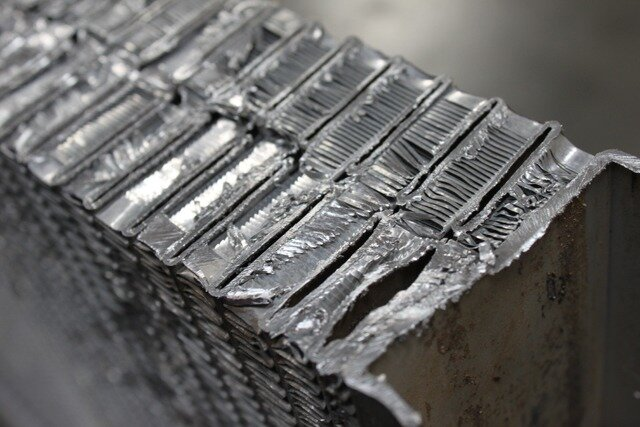Understanding the full scope of fire risks and prevention is crucial for businesses, especially those operating in high-risk environments. Did you know that fire incidents lead to billions of dollars in damages annually?
As we delve into the costs associated with fire risks and prevention, it becomes clear how vital it is to prepare and mitigate potential fires effectively.
Property Damage
One of the most immediate and obvious costs associated with fire risks is property damage. Fires can devastate commercial buildings, equipment, and inventory. This leads to devastating financial repercussions.
The average property damage claim after a fire incident can range from tens of thousands to millions of dollars. When a fire breaks out, the physical structure may need significant repairs or even complete rebuilding. This takes time and resources.
This disruption can have long-lasting impacts, especially for small businesses. They may not have the financial cushion to recover swiftly.
Without proper fire prevention measures in place, these costs can spiral quickly. This emphasizes the importance of investing in fire safety.
Impact on Residential and Commercial Properties
Residential properties can experience extensive damage, resulting in costly repairs or total loss. For businesses, the consequences can be even more severe. This can affect operations and lead to potential bankruptcy.
Additional Factors to Consider
Fires can cause more than just damage to buildings. People may lose personal items that are special or have memories attached to them. In some cases, cleaning up the damage can also hurt the environment and cost extra money.
Even after repairs, the value of the property might go down. This makes it harder to sell or insure later on.
Business Losses
During and after a fire incident, businesses can experience significant operational interruptions. These interruptions not only impact immediate revenue but may also tarnish a company’s reputation in the market. A prolonged closure can result in
- lost customers
- diminished employee morale
- reduced trust from stakeholders
Additionally, customer loyalty can diminish, with many looking to competitors for solutions. As businesses face increased competition, the longer they stay closed, the more challenging it becomes to regain their previous standing.
Reputational Damage
Additionally, the reputational cost can be difficult to quantify. Customers and clients may feel less secure trusting businesses with poor fire safety records.
This can lead to hidden costs that persist long after the flames are extinguished. This makes it unnecessary to consider only the immediate costs of a fire incident.
Insurance Hikes
After a fire, businesses often have to pay more for their insurance. Insurance companies look at fire history, and if a business had a fire before, they see it as a bigger risk. Because of this, they raise the cost of insurance.
Businesses that had a fire usually pay more than those that haven’t. This can make it harder for them to recover and use their money wisely.
That’s why it’s smart to stop fires before they happen. It helps keep insurance costs low too.
Understanding Insurance Policy Changes
After a fire, people who have insurance might see some changes to their coverage. They may have to pay more money out of pocket before the insurance helps (called a deductible).
Some types of fires might not be covered anymore, and the insurance company might ask for higher limits to cover future problems. It’s important to understand these changes to stay protected.
Investment in Comprehensive Coverage
Many people who own buildings may need to spend more money to get better insurance that protects them from fires. This can make their monthly payments go up, and they might have to pay more before insurance helps. This can make it harder to manage their money.
That’s why it’s smart to check your insurance plan often and make sure it covers fire damage the right way.
Investments in Prevention Systems
To combat fire risks effectively, many businesses find themselves needing to invest in prevention systems, such as
- smoke detectors
- fire alarms
- sprinkler systems
Even though fire safety tools and systems may cost a lot at first, they can help save a business from losing everything later on. Spending money on fire safety can stop fires from happening. This helps protect buildings and keeps the business running smoothly.
Also, rules often say that some fire safety tools must be in place. If a business doesn’t follow these rules, it could be fined or face legal trouble.
New tools like automatic sprinklers and smart smoke alarms can even help businesses get lower insurance bills. So, spending on fire safety is a smart way to save money and stay safe in the long run.
Cost vs. Benefit Analysis of Fire Safety Investments
Installing a fire sprinkler system can mitigate damage. Consider this expenditure in light of potential fire losses-not to mention the peace of mind it brings. Preparing your properties with the right systems is a sensible financial decision that pays off in the long term.
Navigating the Fire Risk Landscape
Dealing with fire risks takes careful planning and smart choices. When businesses understand the costs that come with fires, they can make a good plan to stay safe. Spending money on fire safety tools and systems helps lower the chance of big losses.
Fires don’t just damage buildings. They can stop a business from running, hurt its reputation, and cause money problems. But by staying away from known dangers and using strong fire safety tools, companies protect not just their things, but their future too.
Understanding Fire Risk Costs
Fire risk cost, and prevention are multifaceted. It encompasses property damage, business disruption, increased insurance premiums, and the need for investments in prevention systems. Each of these factors plays a crucial role in determining a company’s overall financial health.
By addressing fire prevention proactively, businesses can significantly reduce potential losses and enhance their operational efficiency.
Prioritize Fire Risk Management
Understanding the various costs associated with fire risks and prevention is vital for building a resilient business model. From property damage to business losses and rising insurance costs, the implications of neglecting fire safety can be devastating. By investing in modern prevention systems and maintaining a vigilant approach to fire risks, organizations can minimize their exposure to loss.
Take proactive steps today to assess your fire risk and implement necessary prevention strategies. Don’t wait for a fire to understand the true Fire risk cost. Act now to protect your business and its future.
For more safety tips, check out our blog posts.

Dilawar Mughal is an accomplished author with a passion for storytelling. His works span various genres, from thrilling mysteries to heartfelt romance novels. With a keen eye for detail and a knack for character development, Sana Fatima weaves engaging narratives that captivate readers and transport them to new worlds.










